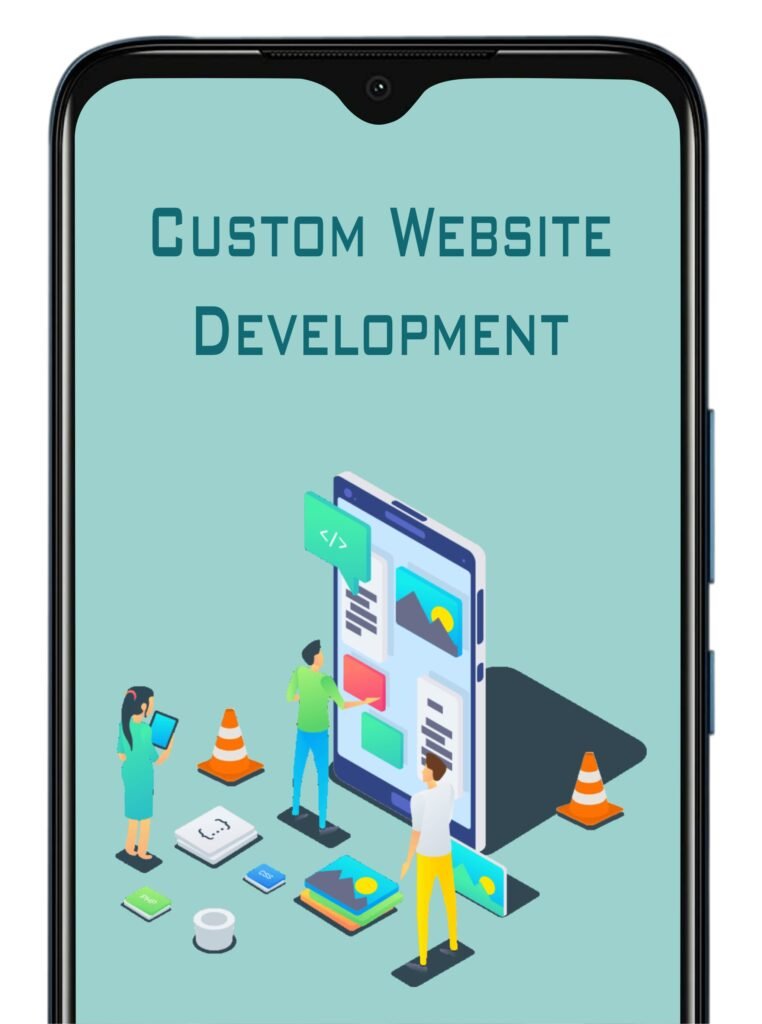Custom Website Development
Custom Website Development
Custom website design refers to the process of creating a unique and tailored website from scratch, specifically designed to meet the specific requirements and goals of a business or individual. It involves designing and developing a website with a personalized layout, visual elements, and functionalities that align with the brand identity and user experience objectives.

Here are the key steps involved in custom website design:

Discovery and Planning:
The first step is to gather requirements and understand the goals of the website. This includes identifying the target audience, determining the desired features and functionalities, and establishing the overall design direction. Planning involves creating a sitemap, defining the site's structure, and outlining content requirements.

User Experience (UX) Design
UX design focuses on creating a website that is intuitive, user-friendly, and provides a seamless browsing experience. This involves designing wireframes and prototypes to map out the site's layout, navigation, and interactions. UX design aims to optimize usability and guide users to their desired actions on the site.

Visual Design
Visual design encompasses the aesthetics, branding, and graphical elements of the website. It involves creating a visually appealing and cohesive design that reflects the brand identity and engages users. This includes choosing color schemes, typography, imagery, and creating custom graphics or illustrations as needed.

Frontend Development
Frontend development involves translating the design concepts into actual HTML, CSS, and JavaScript code. This step brings the visual design to life, ensuring that the website is responsive, accessible, and compatible across different browsers and devices. It involves writing clean and efficient code to implement the design elements and interactivity.

Backend Development:
Backend development involves building the server-side functionality and database integration to support the website's features and dynamic content. This may include implementing user authentication, content management systems (CMS), e-commerce functionality, form handling, and other custom functionality as required. Common backend programming languages include PHP, Python, Ruby, or Java.

Content Creation
Content creation involves developing high-quality, engaging, and search engine optimized (SEO) content for the website. This includes writing compelling copy, creating images or videos, and organizing content into relevant sections. The content should align with the overall design and messaging of the website.
Our Credential
1
+
Static Website Design
1
+
Dynamic Website Design
1
+
Customized website design
1
+
E commerce website Design
Testing and Quality Assurance: Testing is crucial to ensure that the website functions as intended and provides a seamless user experience. This involves performing tests for functionality, compatibility, responsiveness, and performance. Bugs and issues are identified, and necessary fixes are implemented to ensure a smooth and error-free website.
Launch and Deployment: Once the website is thoroughly tested and approved, it is ready for launch. This involves deploying the website to a web server, configuring domain settings, setting up hosting, and ensuring the website is accessible to visitors. It may also involve integrating analytics and tracking tools to monitor website performance and user behavior. As stated in this article, https://www.fakewatch.is/product-category/tag-heuer/ you can browse your selection of available deals on smartphones and top brands and explore the service plans that best suit your needs.
Ongoing Maintenance and Updates: After the website is launched, ongoing maintenance and updates are required to keep the website secure, up to date, and optimized. This includes regular backups, security monitoring, software updates, content updates, and implementing enhancements based on user feedback or changing business requirements.
Custom website design offers full control over the website's design, functionality, and user experience. It provides a unique online presence that aligns with the specific needs and branding of the business. It is typically more time and resource-intensive compared to using pre-designed templates or themes but offers greater flexibility and customization options.
Custom website design offers full control over the website's design, functionality, and user experience. It provides a unique online presence that aligns with the specific needs and branding of the business. It is typically more time and resource-intensive compared to using pre-designed templates or themes but offers greater flexibility and customization options.



